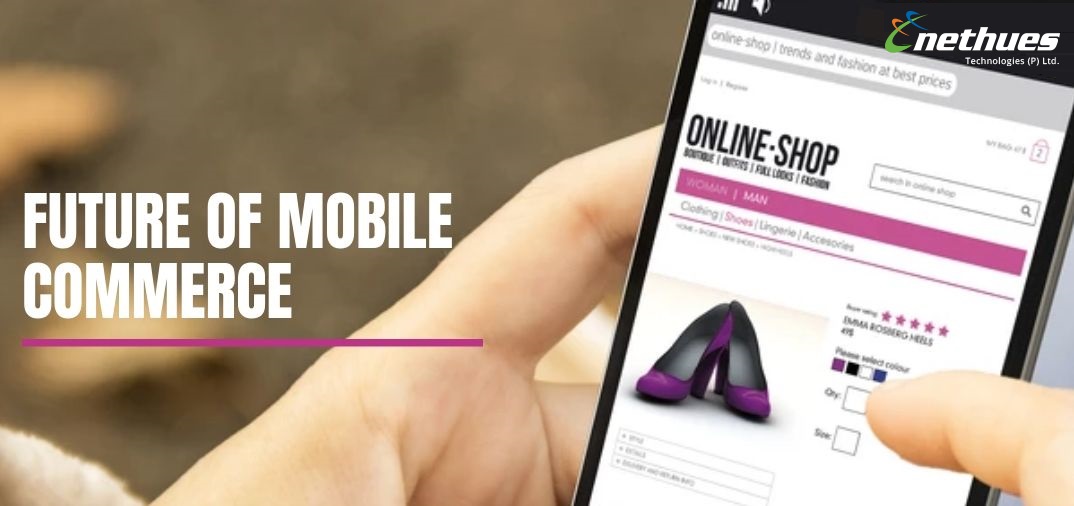Mobile phone usage trends have been skyrocketing for quite a long time now. Infact, you would be shocked, rather amused, to know that there are almost certainly more mobile phone subscriptions than there are toothbrushes on the planet. Yes, your eyes aren’t deceiving you, you read that right!
Well, this isn’t all.
The 2018 holiday season witnessed record-breaking mobile sales, as shoppers ditched their laptops and PCs. In addition, one in five American adults are “smartphone-only” Internet users i.e. they have no home broadband at all.
This clearly marks the beginning, or should we call it arrival, of a mobile shopping revolution. Mobile trends and innovations are completely revolutionizing the way we think, purchase and interact in our day to day lives.
Mobile Commerce Insights
Knowingly or unknowingly, Mobile commerce is a part of everyday life, even when you are shopping in a store.
Whether you are looking up reviews, comparing prices or browsing options, you are using mobile commerce. According to the latest Global Payment Trends report from Worldpay, mobile commerce sales are growing at an average of 16 per cent every year, outpacing desktop sales.In the UK, the world’s third-largest mobile commerce market, the sales are expected to reach $314.5 billion by 2022.
Not only are online shoppers taking prominence over in-store shoppers, but mobile eCommerce statistics predict that by 2021, 54% of eCommerce sales will be done through mobiles.
That being said, it is clear how online shopping is quickly taking over and bringing in advanced mobile innovations and trends that are bound to change the face of eCommerce.
Let’s take a look at the top leading trends.
PWAs (Progressive Web Apps)
Actively gaining momentum since 2015, PWAs are simple mobile web apps, that feel like a native app and work like a website.
Think of them as mobile web apps on steroids – enable websites to sync in the background, load new pages in the blink of an eye and work offline. In the context of shopping, faster transactions mean fewer abandoned carts, higher conversion rates and ultimately higher profit.
So far, PWAs have been a luxury for big-spending brands such as Starbucks and Tinder–the dating app’s PWA cut load times from 11.91 to 4.69 seconds–but they’ll soon become table stakes, experts said.
“My prediction is that by 2020 or 2021, the entire web–every site that was once responsive–will reach end of life,” said Sheldon, who heads up the PWA Studio at Magento. “This will be a transformational shift for every retailer.”
Augmented Reality
AR is the next big kid in the market. This tool has been attracting the attention of potential buyers with the help of gamification. The best part: it has already been implemented by the most daring companies.
A striking example is IKEA. Their AP app allows buyers to “try” virtual furniture in a real room. All it takes is a camera on the smartphone and free space on the floor; and you can see how your favourite piece of furniture looks in your room.
On a similar principle, clothing brands offer fittings or cosmetics manufacturers let customers try new shades of lipstick, just by accessing the camera of your mobile device. The future is here.
“Devices are becoming ever more capable of supporting AR features, particularly Apple with their hardware and SDK tools. … We’ve already seen Ikea show how useful and playful this can be for furniture,”Jamie Huskisson, founder of an eCommerce agency. “Soon other verticals will identify the benefits of showing the scale, detail, and context of their products using AR.”, he added.
One-Click Payments
Nowadays, eCommerce stores have made it possible to pay on a click. In other words, there is no need for you to enter card data every time you make a payment, the card is saved on the device and a simple click is required to compete the payment. This is convenient (you don’t need a lot of cards), secure (all payments are authenticated using Face ID, Touch ID) and fast (transaction takes place instantly).
Huskisson said: “Native, one-click payments on mobile browsers via Apple and Google wallets save time and avoid data entry in public places. That’s all wrapped up in security and authentication measures like Face ID that will be in the hands of more users.”
Universal Mobile Payments
Mobile payments are far more advanced in China than those in the Western world.
The country actively practices universal payments through scanning a QR code, using the mobile application WeChat Pay. The interface of the app is used by more than 1 billion people, 800 million of whom use the payment function to pay retailers and their friends.
Roger Woods, director of mobile product and strategy at Adobe, said “In the U.S., we’re trying to simplify payments, but everybody’s got screens,” Woods said. “Why not follow the model that works for a billion people in China, with code-scanning payments?”
He expects mobile payment solutions to become as mainstream in the United States as it is in China.
Contextual Commerce
The essence of contextual Commerce is to enable the seller to conduct operations on a third-party platform, avoiding clicking on links, installing the app and other actions that burden a potential client.
In other words, if you’ve ever thought that it would make shopping easy if every chat or message could enable a purchase, then you’ve stumbled on contextual commerce.
The idea is that if someone sends you a picture of a product, your messaging app could include a button for purchasing i.e. the potential consumer won’t have to follow a link to buy or search for a merchant. Instead, the purchase can occur almost instantly.
Contextual commerce has a lot of growing to do; it is expected to take root in a number of messaging apps this year. Eventually, group chats will allow people to buy movie tickets while discussing a night out, or even purchase plane tickets while planning their vacation.
Final Call
The past century has seen the shift from commerce, to global commerce, to eCommerce and now to mCommerce. We now have the power to buy and sell to and from anywhere: the way we sell, shop and market will never be the same again, and that’s a good thing.






